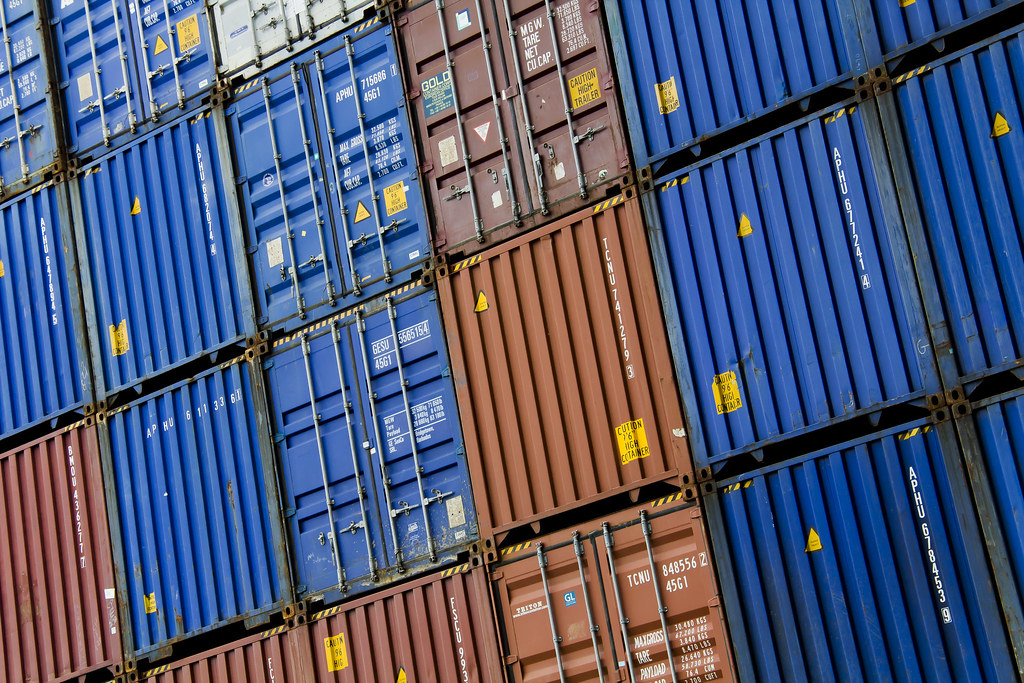Real-time location systems (RTLS) are becoming a useful tool in the management of ports and container terminals. Becoming a “smart port” requires better visibility and tracking of assets in real-time, improving operational efficiency and worker safety. In this article, we will explore the usage of RTLS in creating smart ports and container terminals, with a focus on worker safety, vehicle tracking, collision tracking, and container storage.
Skip to How RTLS Works
Worker safety
One of the key benefits of RTLS in creating smart ports and container terminals is improving worker safety. The use of RTLS enables the tracking of personnel, equipment, and vehicles within the terminal. This allows operators to monitor the movements of workers and assets in real-time, ensuring that they are not at risk of collisions or accidents. In addition, RTLS can alert operators to potential hazards, such as the presence of unauthorized personnel in restricted areas or dangerous weather conditions.
For example, a port in California implemented an RTLS solution to monitor the movements of workers and vehicles within the terminal. The system uses location tags attached to workers and equipment, which are tracked using a network of sensors throughout the terminal. The system alerts operators to potential collisions and provides real-time information on the location of workers and equipment, improving worker safety.
Vehicle Tracking
Vehicle tracking is another area where RTLS technology can be applied in ports and container terminals. By using RTLS tags and sensors on vehicles, managers can monitor their location and movement in real-time. A visualization of the entire port can be built, allowing managers to monitor the port from wherever in the world they are. They can track the status/condition of vehicles as well as setting up alerts for any kind of unusual behavior. Are vehicles or containers lingering for too long in the wrong areas? Are vehicles mustering in the wrong locations? Are vehicles being maintained in a timely manner? The possibilities for system improvements are almost endless.
On top of the above, the new oversight allows for the more efficient routing and scheduling of vehicles, reducing the time spent waiting in queues and congestion. Additionally, RTLS will help vehicle movement and routing to reduce fuel consumption and minimize emissions.
Collision tracking
Collision tracking is another critical application of RTLS technology in ports and container terminals. With the large number of vehicles and equipment moving around these areas, there is always a risk of collisions, which can lead to property damage, injuries, and even fatalities. Certain zones can be marked out as low speed areas, and alerts can automatically be triggered when vehicles are moving too fast. RTLS technology can help mitigate the risk of accidents by providing real-time information on the location and movement of vehicles and equipment. This enables managers to identify risky drivers and take corrective action to prevent accidents.
Container Storage
RTLS can also be used to improve container storage within ports and container terminals. The tracking of containers in real-time enables operators to optimize storage and reduce waiting times for container movements. Automation functions can assign containers automatically and help direct drivers to the appropriate loading and unloading bays. In addition, RTLS can be used to monitor the condition of containers, ensuring that they are stored in appropriate environments and reducing the risk of damage.
How does RTLS work?
Real-time location systems (RTLS) use various technologies to track the location of assets in real-time. These systems are used in a range of applications, including logistics, healthcare, and manufacturing.
These systems typically consist of three main components: tags, sensors, and software. Tags are attached to assets, such as vehicles, equipment, inventory, or even people, and emit a signal that is picked up by sensors. Sensors are strategically placed throughout an area to capture the signals emitted by the tags. The data collected by the sensors is then processed by software to determine the location of the tags in real-time.
There are several types of tags that can be used in RTLS systems, including active, passive, and semi-passive tags. Active tags have an internal power source and emit a signal at regular intervals. Passive tags do not have an internal power source and rely on the energy from the reader to transmit their signal. Semi-passive tags have an internal power source to power the tag’s circuitry but rely on the reader for communication.
Readers in RTLS systems use a variety of technologies to capture tag signals, including Ultra-wideband (UWB), infrared (IR), BLE, and Wi-Fi. UWB is becoming the most useful technology in RTLS systems due to its accuracy and ability to penetrate obstacles. Sensors can be fixed or mobile, and their location is carefully planned to ensure optimal coverage of the area being monitored.
The software component of RTLS systems is responsible for processing the data collected by the sensors and determining the location of the tags in real-time. The software can be customized to meet the needs of specific applications, such as worker safety or asset tracking.
In summary, RTLS systems use tags, sensors, and software to track the location of assets in real-time. The technology used in RTLS systems varies depending on the specific application, but all RTLS systems rely on the collection and processing of data to determine the location of assets.
Conclusion
In conclusion, the use of RTLS to create smart ports and container terminals provides a range of benefits, including improving worker safety, vehicle tracking, collision tracking, and container storage optimization. The tracking of personnel, equipment, and vehicles in real-time enables operators to monitor movements and prevent accidents before they occur. The use of real-time data also enables operators to optimize operations and reduce waiting times, improving operational efficiency. As such, the implementation of RTLS solutions in ports and container terminals is becoming increasingly important for ensuring the safety and efficiency of these critical transportation hubs.

